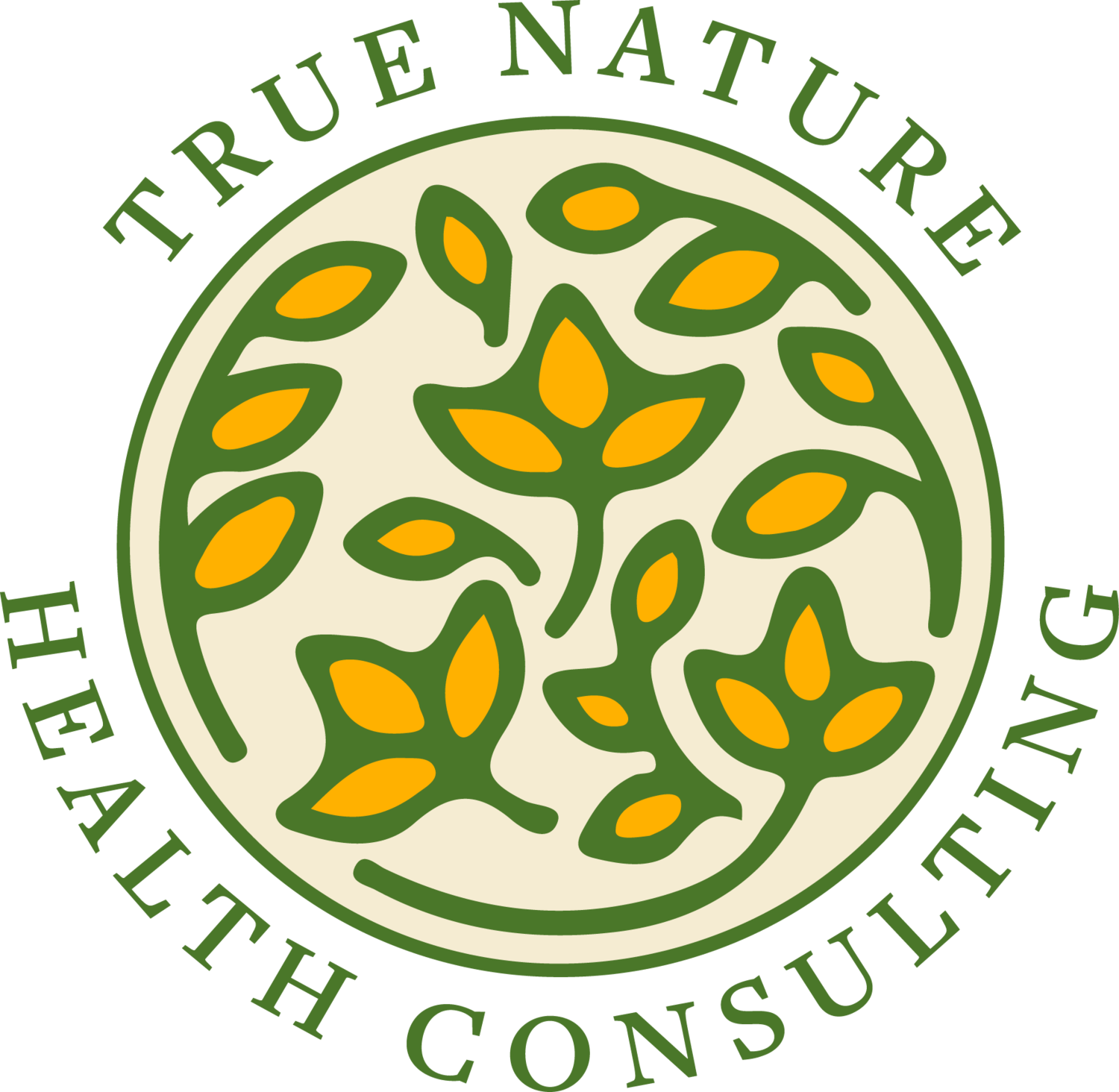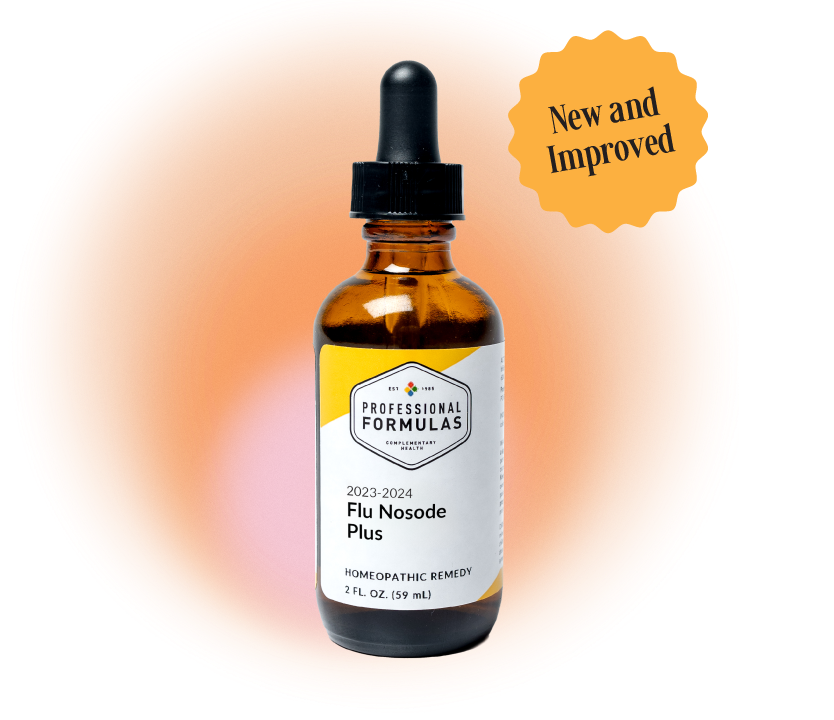The Seasonal Flu and Holistic Health Choices
Hello, I am Julie Donaldson and I am a clinical nutritionist with functional health training. I specialize in restoring balance in complex, chronic and acute health conditions. I welcome you to peruse other articles that may be of interest to you in your health investigation!
“It took me a couple of years to get on board with the concept of flu protection with homeopathy. But, now I’m one in a big extended family of believers! It works, it’s safe and it’s cheap - what more could anyone want?”
This is the time of year when people everywhere begin to think about the seasonal flu and how to protect themselves. We all know that annual flu shots are recommended with a good bit of ferver in the medical and public health communities. But, what if this choice comes with risks and negative side effects when there are choices that protect us as well (or better) that do not? Let’s look at the evidence and have an open conversation about alternatives that offer a healthy body for the winter. Important research into the realm of outdated germ theories is here as well, helping us to understand that we as “hosts” are complex in our individual contributions to an inactive virus. This is always an important conversation in the holistic health care realm.
Healthy choices, healthy winter
What are the major concerns with getting the flu shot?
Normal levels of efficacy with the flu shot vary widely from year to year (10-60%), but the average tends to run around 30-40%. If one were to hold true to the definition of a vaccine (which is to eradicate disease) this would clearly qualify as a failure. While many people might argue that if it helps some, it’s worthwhile, there are also dangers that I’ll discuss later in the article.
Let’s talk about the last 2 flu seasons…
Data on the 2023-2024 flu season shows VE (vaccine effectiveness) at an average rate of 28% for pediatric patients and 32% for adults aged 18-64. (These are obtained from the CDC Morbidity and Mortality Weekly Report.
In the US during the season from October 2021 to February 2022, vaccine effectiveness of only 16% was observed from the seasonal flu vaccine in protecting the U.S. population from contracting the most common influenza virus in current circulation, A(H3N2). More specifically, VE against mild to moderate ARI associated with the influenza A(H3N2) virus in outpatients who received medical attention was 16%, a percentage not considered to be “significantly effective”. Further, VE for outpatients with ARI associated with influenza A virus types who were medically attended was even lower, at 14%.
One of the epidemiologists (Dr. Edward Belongia) who has researched and compiled meta analyses of other research, currently expresses concern for the poor vaccine performance. The low vaccine efficacy in the most common influenza strain in circulation is particularly concerning, as the A(H3N2) influenza virus mutates faster and typically leads to more hospitalizations and deaths, supporting the argument for continued influenza diagnostic testing, antiviral treatments and preventative measures to mitigate its spread and resulting health complications.
This trend with low effectiveness began in the 2014-2015 flu season, with a VE of only 19%. At that time, some notable factors about efficacy were called into question and are still part of the conversation today. Dr. Danuta Skowronski of the British Columbia Centre for Disease Control began to study the statistics of this failed vaccine and found that repeated flu shots may blunt the vaccine’s effectiveness in subsequent seasons. Dr. Skowronski prefers to blame mutations in the vaccine strain itself. The most common influenza vaccine contains an "inactivated" virus, which vaccine manufacturers grow in chicken eggs. As Skowronski's team first reported in 2014, the virus can mutate while it is growing in the eggs, resulting in a vaccine unable to block circulating strains.
But there is much more to the story, and many epidemiologists believe they know less about influenza and vaccines now than they did 10 years ago. The influenza vaccine teaches the body to produce antibodies against the head of the virus's surface protein, hemagglutinin (HA). Those antibodies ideally prevent HA from attaching to cellular receptors, thwarting infection. But HA's head is highly mutable, which is why vaccinemakers must come up with a new formula every year.
For many decades, researchers believed the flu vaccine offered solid protection if it was a good match to the circulating strains - studies from the 1940s through the 1960s routinely showed an efficacy of 70% to 90%. But those studies relied on a misleading methodology. Without a simple way to detect the virus in the blood, researchers measured antibody levels, looking for a spike that occurs after infection. Then in the 1990s, sensitive polymerase chain reaction (PCR) tests enabled researchers to actually measure viral levels, and they told a different story. It turned out that some people who did not have the big antibody spike after exposure (and were therefore counted as a vaccine success) actually did show a jump in viral levels, signaling infection. Earlier assessments had exaggerated vaccine efficacy. What's more, efficacy was sometimes low even when the vaccine and circulating strains appeared well matched. Something else was afoot. The current theory is that repetitive shots create a disruption with the antibody responses that were generated in the prior year(s).
Over 200 viruses cause influenza and influenza-like illness which produce the same symptoms (fever, headache, aches and pains, cough and runny noses). Without laboratory tests, doctors cannot tell the two illnesses apart. Both last for days and rarely lead to death or serious illness. At best, vaccines might be effective against only Influenza A and B, which represent about 10% of all circulating viruses.
Human flu vaccines are produced via insects and chicken eggs. This means that the virus particles extracted from these hosts would contain foreign proteins (more on this below in the discussion on virions.). The vaccines would therefore produce different and/or unpredictable immunological responses in humans than would be expected from human influenza viral particles.
Now let’s talk about potential damage from the shots…
Below is the chart of adverse vaccine responses that is most recent. Remember, it is estimated that only 1% of people with injuries file this type of report, as the majority of our population do not even know about the government’s VAERS site. Therefore, the actual number of significant immune injuries and deaths may be in the hundreds of thousands.
September 2022 VAERS data from 2021-2022 flu season
We know that this can happen with any vaccine, as well as with any acute immune attack. The immune system functions in a Bell Curve. With invasion, there is high inflammation. Inflammatory processes in a variety of immune pathways and cells are what create attack against the invader. Unfortunately, in some people, this inflammation doesn’t resolve, sending the Bell Curve back downward where the immune system is modulated. As I’ve written about previously, it is very important for all of us to regularly look behind the curtain to assess our biochemistry and immune capacities. If pre-existing stresses and imbalances in the immune system are not identified, either an illness or a treatment can become very offensive to the body.
The most commonly reported side effects of the flu shot are:
fever
headaches and body aches
nausea
respiratory stress
Unfortunately, more serious reactions such as seizures and Guillian-Barre Syndrome are also reported by some following the flu shot.
(Data for 2022/2023 adverse events may be seen here: https://wonder.cdc.gov/vaers.html. In last year’s data, the most frequently occurring adverse events are respiratory failure, shock, kidney injury, heart attack, hypotension, hypoxia, ICU admission and death.)
Another critical note note on this topic is the advice often given to “take Tylenol” after a vaccination to reduce pain and inflammation. It is now known that acetaminophen (the active ingredient in Tylenol) is associated with the development of Autism Spectrum Disorder. This is true both for use during pregnancy and in early childhood. Pregnant women and small children should absolutely avoid the use of this drug.
Helpful research on viruses as information carriers
A critical study in 2015 shed light on how viruses actually enter and activate in the human body. While the mainstream thinking is that viruses are “alive” and therefore utterly dangerous to human health, this study went very deep into the the molecular composition of viruses, contradicting this outdated theory. Here are some of the “whittled down” takeaways from this deep-dive:
In order for a virus to activate and produce disease, it requires something called virions. Virions are the means by which viral nucleic acids are able to move and 'infect' living organisms. They are “taxis”, if you will. Viruses are described as existing somewhere between living and inanimate objects because they do not produce ether own energy nor are they transmissible without a living host. Without the virion (taxi) to carry around the virus DNA (passenger), a virus is harmless.
Virion architecture is unique to the host. Made up of proteins, lipids and nucleic acids in individual ways, they become part of any virus that achieves infection in a human and affect the immune response within that human. This reflects also the pre-existing immunology of the individual.
These same researchers connect the dots between viruses, virions and exosomes. Virion particles share stunning similarities to naturally occurring virus-like particles produced by all living cells called exosomes. Exosomes, like many viruses, are enclosed in a membrane, are similarly sized, and also contain biologically active molecules, such as proteins, lipids and RNA.
As carriers of RNA, exosomes are essential for regulating a vast majority of the expression of human genetics. When we look at viruses through the lens of their overlap with exosomes, we start to understand how their function could be considered neutral as "information carriers”. Both exosomes and viruses may actually be responsible for cross-kingdom cellular communication. Communicating horizontally between the host and a virus, for instance, transfers information between two different organisms. Exosomes play very important roles in the regulation of innate and adaptive immunity, and they are communicating with currently expressive genetic patterns while also working to “clean up” cellular toxins and debris.
In light of this post-germ theory perspective, viruses could be described as pieces of information in search of DNA chromosomes - not inherently "bad," but, in fact, essential for mediating the host/pathogen relationship within humans who must adapt to ever-shifting environmental conditions in order to survive. DNA alone cannot do this in real-time. it may take 100,000 years for a protein-coding gene sequence to alter in response to the environment, vs. seconds for a protein-coding gene expression to be altered via modulation with viral or exosomal RNAs. This intensely highlights the need for the epigenetic health of the human body to be at its highest. The healthier we begin, the more effective this modulation will be.
This does not mean that viruses are "all good" either. Given numerous conditions outside their control, their messages could present challenges or misinformation to the cells to which they are exposed and this could result in disease symptoms. These disease symptoms are natural attempts by the body to self-regulate and ultimately heal itself. Remember, all illness is an inflammatory bell curve - there are innate responses to invasions that are handled with more or less inflammation depending upon the host status.
To sum up,like exosomes, viruses may exist as a means of extracellular communication between cells instead of simply as a pathological disease entity.
Moving on to the healthy alternatives - the influenza nosode and colostrum
In the same year (2015) that the VE was a mere 14%, a Brazilian public health study of 445 children showed that those receiving a placebo had a rate of flu-type illnesses of over 30% throughout the flu season. On the other hand, those receiving a homeopathic nosode of flu strains had an infection rate of less than 1%! Another key point detected in this study is that in the 1% infected, the children who received homeopathic medicines presented with only one episode of flu and acute respiratory infection, while the placebo group had three episodes. The types of homeopathic preparations delivered to the children also had a significant impact. Strict standards plus combination formulation provided the successful outcome.
I have strictly used the homeopathic preparations from Professional Formulas for decades now. Their standards surpass any others I have seen. This year’s formula has been improved with the addition of oscillococcinum, the main ingredient in homeopathic formulas which relieves any symptoms occurring in an active viral expression.
Homeopathic flu nosode
Like cures like is the explanation of homeopathy and its ability to help the body defend itself. Like a vaccine but much milder and without any additives or side effects, the nosode safely stimulates the immune system to fight influenza. There is evidence that micro-dosing with homeopathic formulas can recruit and boost the body's natural defense systems, producing a natural Bell Curve.
Used once weekly in a prophylactic dose, the nosode is safe for children and family members of all ages. It is a an annual staple for clients of True Nature Health Consulting, myself and my family (none of which have gotten the flu since initiating this practice!). While prevention is the focus with the nosode, it can also be used to reduce any symptoms that do appear and so can be a helpful adjunct for those who opt to receive the shot.
A 2nd newly researched and potent protector is colostrum. Colostrum is produced by the mammary gland within 48 to 73 hours after the birth of offspring. This period is so significant to ensure a correct immunologic status that without colostrum, many newborn mammals do not survive. Human colostrum is an important source of proteins, fats, carbohydrates, vitamins and minerals, and includes several biologically active molecules essential for immunity, such as immunoglobulins (Ig) and growth factors. For several reasons, however, human colostrum is not easily available, storable, or usable as a supplement. Bovine colostrum is the most common source as food supplement. Despite the lack of a defined composition profile and fluctuation of Ig titer, all types of bovine colostrum contain neutralizing Ig against pathogens.
In a study conducted by a team of Italian researchers, it was discovered that colostrum, both in healthy subjects and high-risk cardiovascular patients, is at least 3 times more effective than vaccination to prevent the flu and is very cost effective. In this study, colostrum was delivered once daily in the morning for a period of 2 months to act as a preventative measure against influenza. Statistics were measured 3 months post-initiation. Some participants in the study population received vaccines only, others received vaccines plus colostrum and others received only colostrum. The colostrum-only group had the best outcome with prevention of infection and hospitalization. No significant problems with tolerability or side
effects were observed during the study. Of special note is that individuals with cardiovascular disease were included in this study, as they are particularly vulnerable to the negative effects of influenza infection. These patients fared as well as those without CV disease on the colostrum protocol.
The researchers note that both anti-virals and vaccines will fail in the face of viral “drift” and/or a new emerging virus. Drift is defined as transcription of viral RNA in the absence of “proofreading” activity, which then combines with selective pressures of host immunity This basically means that the virus mutates in the absence of proofreading and if a person’s individual immunity fails to respond with wholeness and effectiveness, the flu virus can become very offensive and more deadly. (Regarding host immunity and this particular point, refer back to the 1st two bullet points above in section titled “Helpful research on viruses as information carriers”)
Additionally, in the study, costs were determined to be 30% or less for colostrum use than costs incurred for vaccination and/or medical care. If I offered you the same approximated cost comparison with the influenza nosode, I would guess that to run 4-5%!
In addition to the use of the nosode and colostrum, I recommend the following holistic health care practices to stay healthy throughout the winter:
Know and practice your Metabolic Type® nutrition
Get sun exposure and/or supplement with vitamin D and K regularly throughout the winter
Test your blood for any stresses that may cause immune imbalances
Stay active, exercising for your MT® on a consistent basis
Maintain adequate levels of vitamin C-containing foods
Supplement with zinc and a zinc ionophore to drive it into your cells
Please contact me at Julie@truenaturehealthconsulting.com for more information on preventative flu therapies today. We are a full-service holistic telehealth care provider.
Disclaimer: This article is not intended to provide medical advice, diagnosis or treatment.




